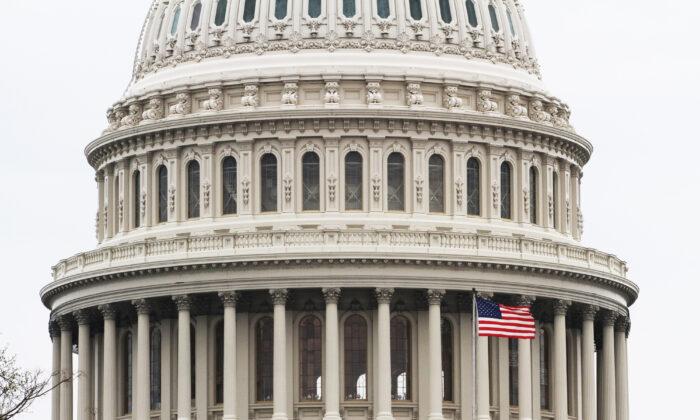With only two days left to fund the federal government, House Republican leaders failed to pass a short-term spending bill, raising the odds of a shutdown. Unless a spending bill is approved by Congress and President Joe Biden, the U.S. government is scheduled to close its doors at 12:01 a.m. EST on Oct. 1.
As a result, economists are assessing the consequences of Washington shuttering its doors and what it means for the broader economy, from disruptions to the financial markets to interruptions of day-to-day federal services.
“While each shutdown has been about the size and scope of government, they’ve each taken place against a unique backdrop,” says Chris Marangi, the co-CIO for Value at Gabelli Funds.
Shutdown and the GDP
Estimates on how much a shutdown would impact the gross domestic product have been minimal, mainly because Social Security and disability payments would continue to be distributed while the Postal Service would remain in operation. In addition, essential government workers would keep working, and furloughed civil servants would be given back pay when the shutdown is over. However, federal contractors are not provided with a guarantee that they will be extended retroactive pay once the government reopens its doors.Alec Phillips, the chief U.S. political economist at Goldman Sachs, projects that a government shutdown would trim economic growth by 0.15 percentage points for every week of closure. This number would rise to 0.2 percentage points per week once the private sector effects are factored into the equation.
“Growth would rise by the same cumulative amount in the quarter following reopening,” Mr. Phillips wrote in a note.
With some estimates pointing to subdued growth in the fourth quarter, ING economists warn that a prolonged government shutdown could result in a shrinking economy in the final three months of 2023, forecasting a reduction of as much as 0.2 percentage points. They noted that should a government shutdown last a couple of months and not be resolved until early December, the GDP growth rate would be slashed by as much as a full percentage point.
According to EY-Parthenon Chief Economist Gregory Daco, every week of a government shutdown would shave roughly $6 billion from the U.S. economy and cut the fourth-quarter GDP growth rate by 0.1 percentage point.
The firm’s analysts say that a failure to raise the debt ceiling is a far more serious issue that would affect U.S. creditworthiness and the overall economic landscape than a shutdown.
Mr. Marangi agrees, noting that a month-long shutdown would only have a modest impact on the economy because of the resilient consumer, even in an environment of high inflation, rising interest rates, geopolitical tensions, and labor disruptions.
Data and the Federal Reserve
A government shutdown would result in limited economic data available to the financial markets and public policymakers as the Bureau of Economic Analysis, the Bureau of Labor Statistics, and the Census Bureau would be temporarily closed. This means that the gold standard of statistics would be postponed, including the September jobs report, the consumer price index, consumer spending, and wholesale prices. Private sector reports like the ADP National Employment Report and the prices paid component of the Institute for Supply Management’s purchasing managers’ index can also be delayed.After this month’s Federal Open Market Committee policy meeting, Fed Chair Jerome Powell told reporters that central bank officials “would just have to deal with” less economic data. Investors, too, would be trading the markets blindfolded as they would not possess enough data to gauge the economy.
Because of this and current signals of weakening conditions, economic observers believe that the Federal Reserve is unlikely to raise interest rates and might finish the present hiking cycle.
“Given the lack of clarity on the state of the economy, it too would strengthen the case for the Fed holding interest rates steady again in November,” said ING economists. “This would give more time for the economic slowdown we anticipate to emerge and with core inflation likely to continue moderating, makes it all the more likely that the Fed’s hiking cycle is already over.”
Financial Market Risks
In addition to data concerns, the financial markets could come across other challenges.In the U.S. Treasury market, where there have been liquidity fears this year, global investors could shun bonds amid diminished confidence in Washington. Moreover, Securities and Exchange Commission (SEC) Chair Gary Gensler warned businesses issuing new debt or going public would be affected.
He added that the SEC would maintain a “skeletal staff” during a shutdown and could only respond to substantive issues in the capital markets.
“When market shocks combine with these vulnerabilities, nonbank financial institutions can transmit risk into other parts of the financial system and seriously hamper the credit and financial intermediation needed to support the economy,” Mr. Gruenberg told the Exchequer Club on the Financial Stability Risks of Nonbank Financial Institutions on Sept. 20.
While dangers face the markets, Mr. Marangi noted that the stock market generally rallies once the shutdown ends.
The S&P 500, for example, rose about 10 percent following the 35-day 2018-2019 shutdown.







